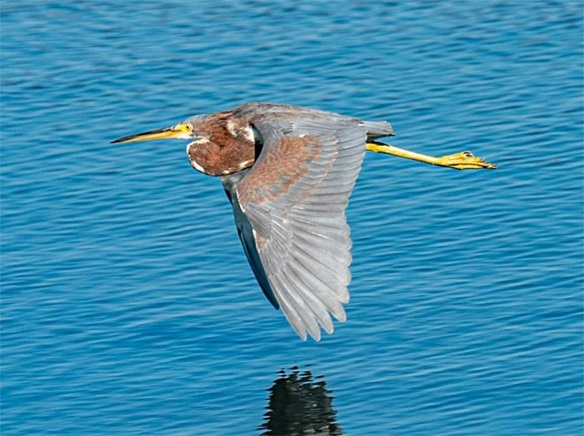By Mort Dukehart
Part of a continuing series about the National Wildlife Refuge.
On my way as a volunteer at the Seal Beach National Wildlife Refuge, I was thinking about what we might be working on that day. Would we be digging, pruning trees and bushes, or cleaning up the unfathomable amount of plastic debris we encounter in the marsh? As I looked up at some dead tree branches where often we see great blue herons roosting, I had that exhilarating birding moment of seeing a large bird, perched in the tree, that I could not identify.
For a birder this is always an exciting moment. Pulling out my binoculars, I began checking the colors on its wings, legs, face, body posture, size of beak, feathers, and tail. This was a new bird for me. I searched through the raptor section of my Sibley guide for possibilities and identified it as a white-tailed kite. I kept a careful, excited watch the next few days until, as usually happens, the bird was gone. This experience with the quiet, the excitement, the magic and beauty of nature is why every visit to the refuge is an adventure.
One of the many purposes of the refuge is to protect the marsh habitat of three endangered species: California least tern, the Ridgway’s rail, and the Belding’s savannah sparrow. We work at building and preserving the habitat for these birds. Time is spent at the least tern nesting area, watching for predators during the incubation period. We also make sure the Ridgway’s rail nesting platforms are maintained.
Birding has been a part of my educator’s life for over 40 years, learning to identify birds through their sounds and colors. Over the years, the “quest” for new and various species has taken me throughout the United States to Cape May, NJ, Point Pelee, Ontario, Canada, the southern mountains of Arizona, the southern border and Gulf coast of Texas and now the California coast and various other locations during the spring and fall migrations. Planning these trips with a childhood friend adds to our always growing bird list.
Observing the birds that come to the Seal Beach National Wildlife Refuge, the species changes that occur with the seasons; everything one would expect to see in a marsh habitat is here. Numerous ducks, grebes, geese are regular denizens. Waders, such as egrets, stilts, avocets, and herons can be seen at different times during the year. Typical marsh birds such as curlews, godwits, willets, sandpipers, and plovers are common. Raptors such as red-tailed hawks, harriers, kestrels, ospreys, peregrine falcons, and the occasional owl are relatively common. In the spring we see Western meadowlarks, white-crowned and song sparrows as well as California towhees. This is a basic, but certainly not complete list of birds to give the sense of the multitude of sightings throughout the year at the refuge.
Looking out over the marsh at low tide, there are numerous birds busy looking for food. I happened to notice a reddish egret, with its rufous colored neck, gray back and legs and very distinctive black tipped, long pointed beak. There is little problem in identifying this egret. This was not a first-time sighting, but this species of egret is mainly a southern/western bird in the United States. As it scanned the water for the next meal, a frog or two or various insects, dancing around with its wings open to reduce the glare of the water to better see its food. The birder and author Peter Dunne nicknamed this bird the “Tyrannosaurus Rex of the Marsh Flats” because of this behavior and thus it is another example of nature at its most endearing.”
With the gradual re-opening of parks, museums, etc., and a sense of returning to a “new normal,” the Friends of Seal Beach National Wildlife Refuge hope to encounter many from our community who desire to experience a closeness to nature on future tours.
Mort Dukehart is a volunteer with the Friends of Seal Beach National Wildlife Refuge




